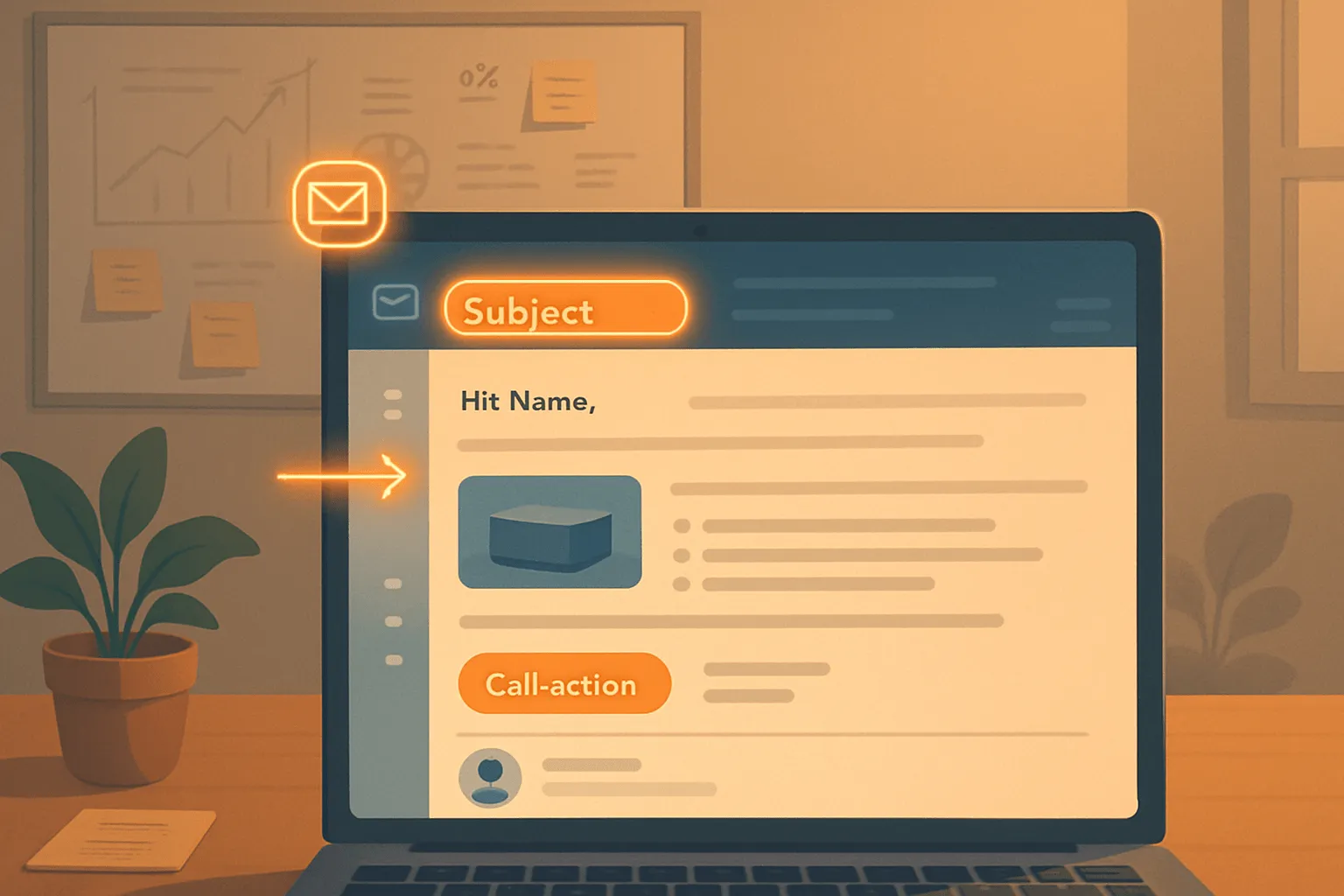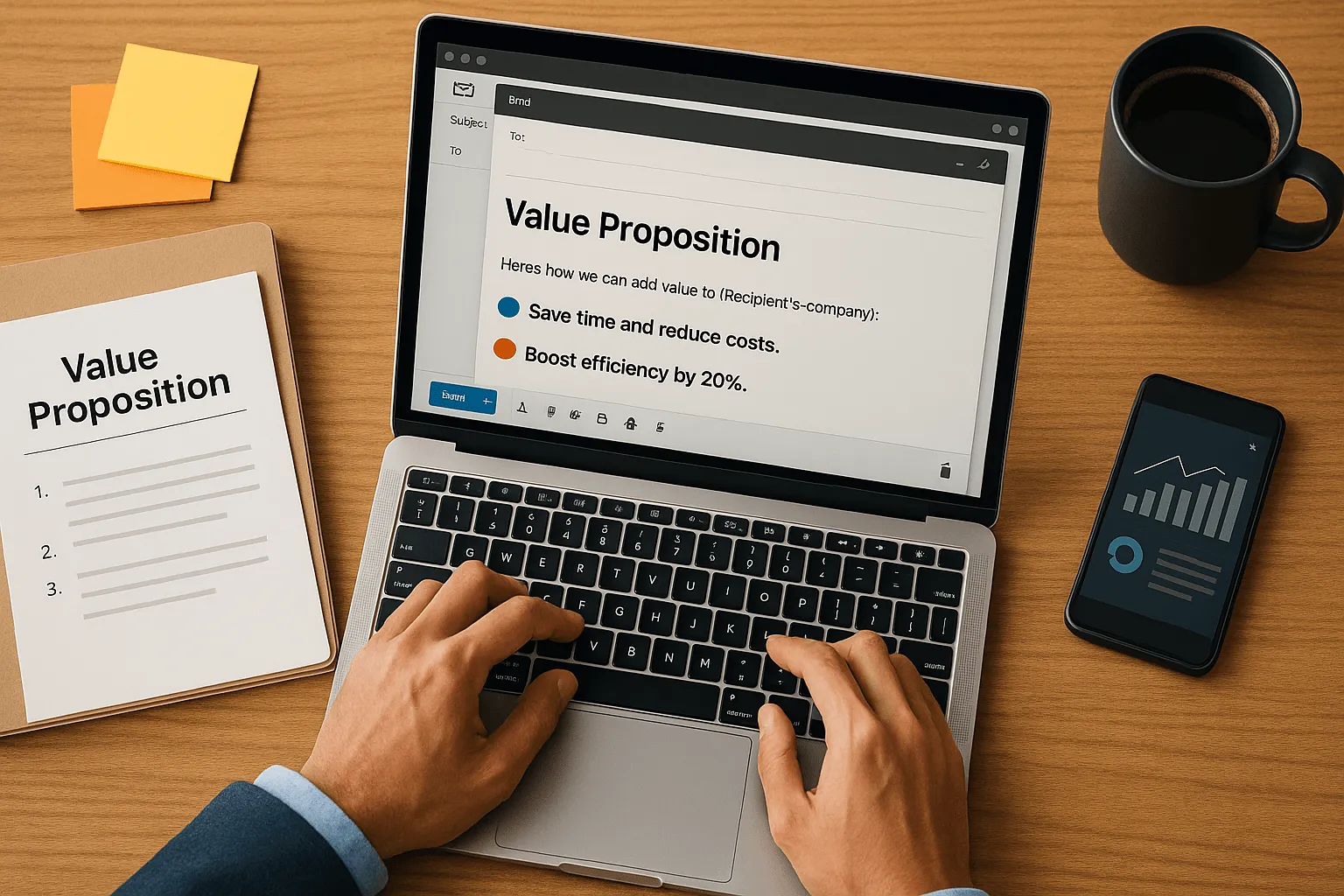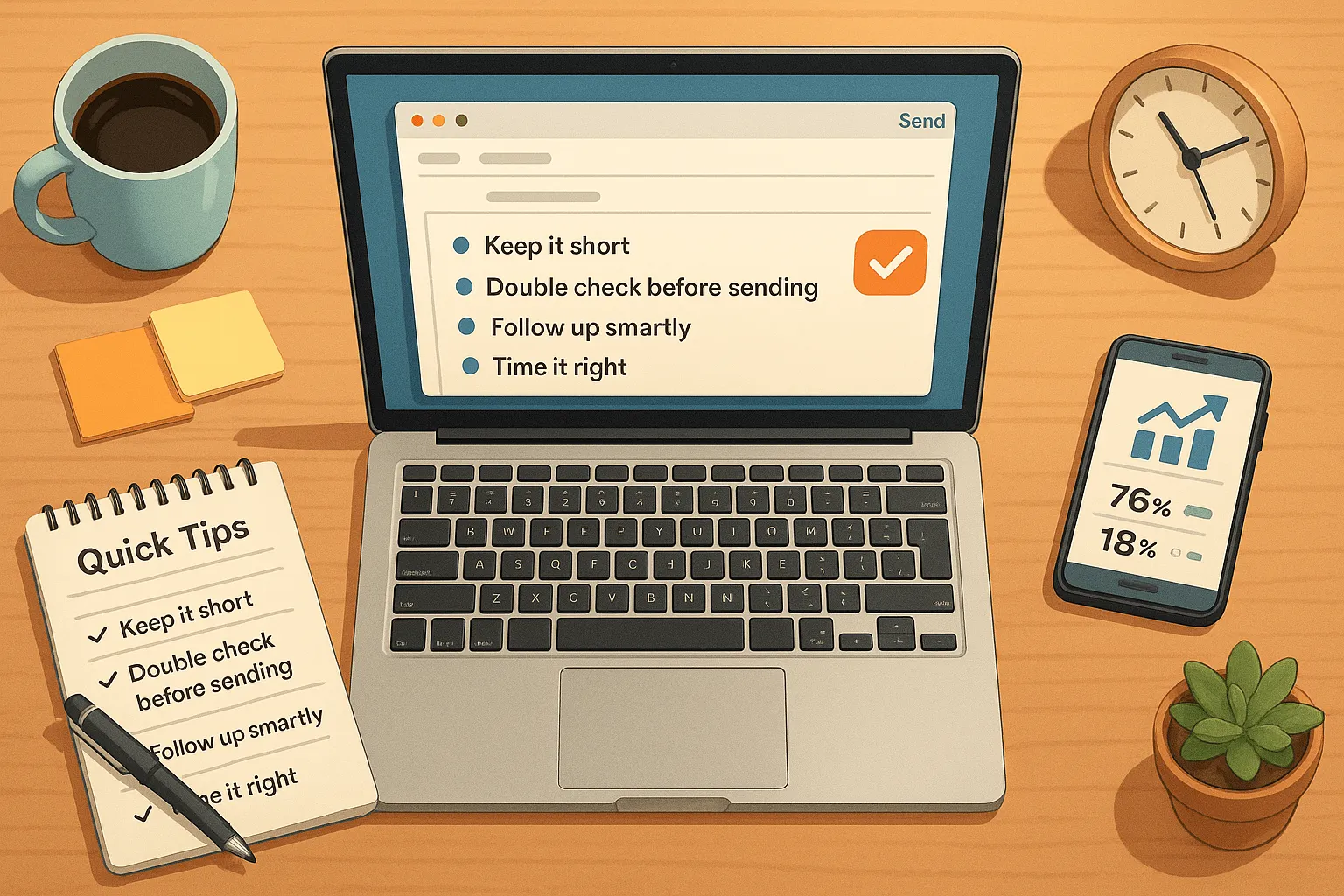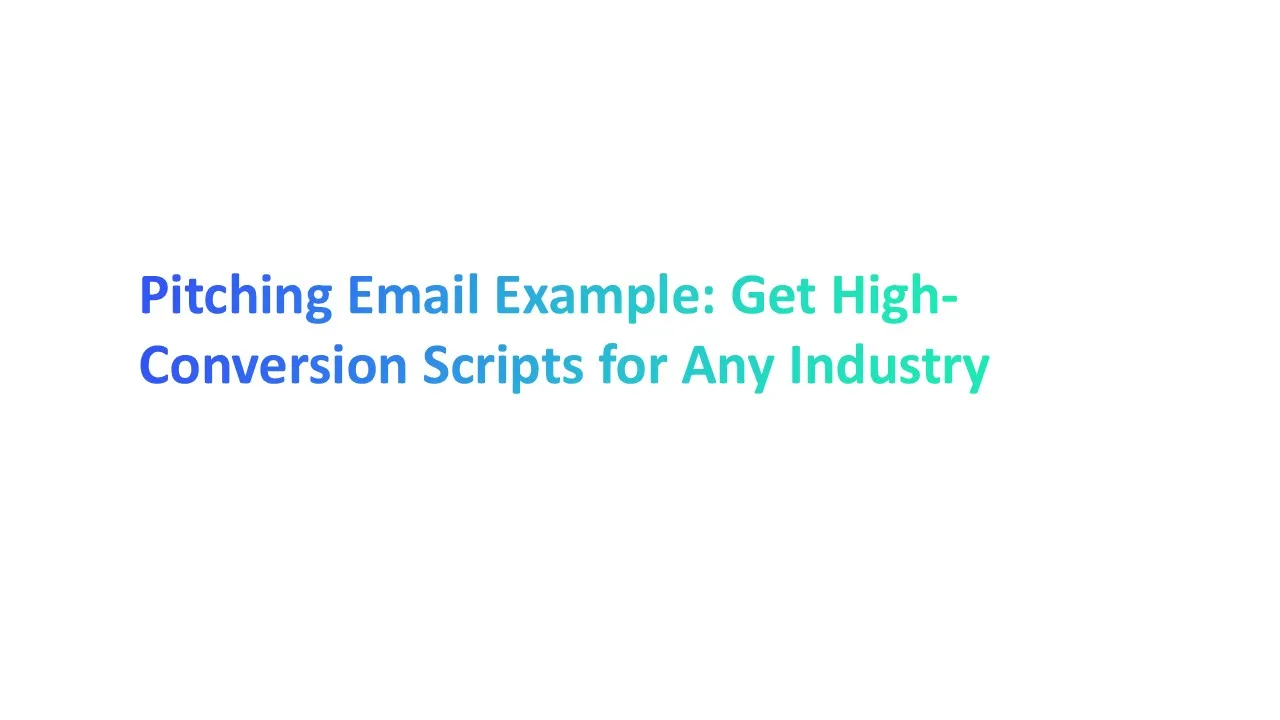According to HubSpot, the average email open rate across industries is just 34.4%, which means most pitches die in the inbox. But here’s the good news—you can beat those odds with the right structure, tone, and timing.
In this guide, you’ll get a pitching email example for every situation, plus ready-to-use scripts tested in real-world scenarios.
Whether you’re chasing clients, investors, or media coverage, these templates will help you grab attention and close deals faster.
What is a Pitching Email?

A pitching email is a short, professional email you send to share an idea, offer, or request. It’s used in many situations—like asking for media coverage, suggesting a brand partnership, or introducing a product pitch.
Think of it as your first impression. The goal is to grab the recipient’s attention fast. According to HubSpot, emails with a clear value proposition in the first two sentences can increase reply rates by up to 30%.
“Be clear, be short, and be relevant—people read emails in seconds, not minutes.” – Mailchimp Data Report
Email Pitches: Why Personalization Wins Every Time
Sending the same email to everyone rarely works. People respond better when you make it personal. Personalization can mean using their company name, mentioning a shared interest, or pointing out their pain points you can solve.
Why it works:
- Emails with personalized subject lines get 26% more opens (Campaign Monitor).
- You show the target audience you’ve done your homework.
- It builds trust and improves your chance of more detail discussions.
Quick tips for better email pitches:
- Use email templates as a base, but customize each one.
- Include real life examples of your work.
- Always double check names, facts, and links before sending.
Understanding the Anatomy of a High-Converting Pitch Email

A good pitching email example is more than just words on a screen. It’s built to grab the recipient’s attention, solve their pain points, and drive action. Every part matters.
According to Campaign Monitor, emails with a good subject line can boost open rates by 26%. That means how you structure your pitch could decide if it gets read—or deleted.
Here’s what to include:
- Subject Line: Short, relevant, and personal to your target audience.
- Opening Paragraph: Explain why you’re reaching out and give a clear value proposition.
- Body: Use bullet points for benefits, include real life examples, and keep it well written.
- Call to Action: End with a clear call like “Let’s schedule an initial call.”
“Be specific. The more relevant your email, the higher your chances of a reply.” – HubSpot Sales Data
Pitching Email Example Templates for Different Scenarios
1. Cold Pitch Email Templates to Grab the Recipient’s Attention
If you insert sales pitch points too early, you risk losing the reader’s trust.
2. Elevator Pitch Email Templates for Fast Introductions
A pitch email for a job application should emphasize unique skills early on.
3. Influencer Pitch Templates for Brand Partnership Opportunities
Brands often insert influencer pitch details after showcasing mutual benefits.
4. Product Pitch Templates to Showcase Your Entire Product Range or Product Line
Retailers insert product pitch highlights into bullet points for quick scanning.
5. Investor Pitch Email Templates with All the Data They Need
Always insert investor pitch metrics where they can’t be missed—ideally in the first scroll. Including payment terms early can help filter out mismatched prospects.
6. Business Pitch Emails: Turning Ideas Into Deals
You can insert business pitch details only after confirming the recipient’s interest. If relevant, explain your application process so the recipient knows the next steps.
Industry-Specific Pitching Email Examples
1. PR Professionals Seeking Media Coverage or Sharing a Story Idea
A PR pitch works best when it’s tied to a timely news event or trend.
2. Tech Brands Offering Software Solutions
3. Retail Businesses Promoting a New Product Line or Insert Products
4. Creators Looking to Build Brand Awareness
5. Brand Pitch Emails: Building Partnerships That Last
Many marketers insert brand pitch ideas directly after stating a shared goal.
Crafting the Perfect Pitch Email: Step-by-Step

A great pitching email example follows a simple plan. Each step makes it easier for your reader to say “yes.” Whether you’re talking to your target audience, a journalist, or a potential client, you must keep it well written, short, and focused.
1. Research Before You Write
Know who you are emailing before you hit send. Understand their pain points, company name, and what they care about. Case studies let you insert industry examples that make your pitch more relatable.
How to Implement:
- Visit their website and social media.
- Check their product line or services.
- Look for recent updates, press releases, or real life examples of their work.
- Find a shared interest you can mention in your email.
“People respond when you show you’ve done your homework.” – Campaign Monitor
This step builds trust and ensures your pitch feels relevant.
2. Start With a Strong Opening Paragraph
Your opening paragraph is the hook. It should grab the recipient’s attention in seconds.
How to Implement:
- Use their name and company name right away.
- Mention a story idea, recent win, or a challenge they face.
- Keep it short—two to three sentences at most.
- End with a good subject line that connects to your first sentence.
Example: “I saw your article on [topic] and thought you might like this idea for your readers…”
3. State Your Clear Value Proposition

Your clear value proposition explains exactly why they should care. It shows how your offer helps them.
How to Implement:
- Write in plain language—avoid jargon.
- Link your solution to their pain points.
- Use bullet points to show benefits.
- End with a call to action like scheduling an initial call or asking if they want more detail.
- Always double check for accuracy and tone before sending.
Example:
- Save them time or money.
- Help them reach potential customers faster.
- Improve results with proof from real life examples.
4. Add a Brief Description of Your Offer
A brief description tells the reader exactly what you are offering without overwhelming them. In any pitching email example, this section connects your idea to their needs.
How to Implement:
- Keep it to two or three sentences.
- Link it to their pain points and clear value proposition.
- Avoid long jargon. Use plain words so your target audience can understand quickly.
Example: “We help small retail stores grow sales with a simple mobile app that connects them to local shoppers.”
This works because it’s clear, short, and shows a direct benefit.
5. Back It Up With Credibility
This is where you prove you can deliver. People respond better when you show real life examples or measurable results.
How to Implement:
- Share a short client story or case study.
- Include results in numbers (ex: “Increased website leads by 40% in 3 months”).
- Mention a press release or media mention if relevant. Linking to a blog post in your pitch can add credibility and context.
- Use a robust portfolio link for more proof.
- You can insert pitch links or attachments as proof without overloading the reader.
Example: “We recently worked with [Company Name] and helped them cut costs by 25% while reaching new potential customers.”
As Forbes notes, proof builds trust and shortens the decision making process.
6. Craft a Good Subject Line

Your good subject line is the first thing they see. It decides if your email is opened or ignored.
How to Implement:
- Keep it under 50 characters so it fits on mobile.
- Make it specific to the recipient’s attention.
- Test two email subject lines to see which works better (A/B testing).
- Tie it to your opening paragraph for a smooth flow.
Example: “Quick Idea to Help [Company Name] Reach 5,000 New Customers”
According to Campaign Monitor, personalized subject lines can boost open rates by 26%.
Examples of Email Subject Lines for Your Pitch
Here are ready-to-use ideas you can adapt:
- “Boost [Company Name] Sales by 20% in 3 Months”
- “Story Idea for [Publication Name] Readers”
- “New Product Line That Solves [Pain Point]”
- “Let’s Discuss a Brand Partnership Opportunity”
- “Quick Win for Your Target Audience”
7. Include a Clear Call to Action
In any pitching email example, the call to action is the step you want the reader to take next. Without it, even the best message may not get a reply.
How to Implement:
- Be direct: ask them to “book an initial call” or “reply with a yes if interested.”
- Avoid vague requests like “let me know what you think.”
- Make it easy—include a calendar link or suggest two time slots.
- Keep it friendly but firm so it catches the recipient’s attention.
Example: “If this looks good, can we schedule a 15-minute call this Thursday at 2 PM?”
8. Double Check Before Sending
A well written pitch shows professionalism. A sloppy one can turn potential customers away.
How to Implement:
- Read your email out loud to catch awkward phrases.
- Check spelling, grammar, and names.
- Make sure you haven’t copied the same email to multiple people without personalizing it.
- Confirm links work and attachments are correct.
Example checklist before hitting send:
- Correct name and company name. Always insert name fields correctly so your email feels personal from the first line.
- No typos
- Clear value proposition is visible in the opening paragraph
As Grammarly notes, a single error can cut credibility in half.
9. Follow Up to Confirm Receipt
People get busy. Following up ensures your pitch isn’t lost in a crowded inbox.
How to Implement:
- Wait 5–7 business days before following up.
- Keep it short—remind them of your original pitch and value proposition.
- Ask politely if they had a chance to review.
- End with another clear call to move the conversation forward.
Example: “Hi [Name], just checking in to confirm receipt of my earlier email about [topic]. Would you like me to send more detail?”
Data from Yesware shows follow-ups can increase reply rates by over 25%, especially if you re-state value in a concise way.
How to Optimize Your Pitch for Maximum Replies

- Keep It Short but Impactful: People are busy, and long email pitches are often skipped. A good pitching email example should stick to three or four short paragraphs.
- Get to your value proposition within the first two to three lines so the recipient’s attention is captured right away. If you have more detail to share, use bullet points for clarity
- Double Check Before Hitting Send: A well written professional email shows attention to detail and respect for the recipient. Always double check names, job titles, and company name before sending.
- Make sure your subject line matches the content of your message so expectations are clear. Test all links and attachments to avoid broken or missing files.
- Follow Up Smartly: Many replies actually happen after a follow-up. Wait three to five days before sending the same email again, but make small changes to the email subject lines to keep the message fresh.
- Keep your follow-ups polite, concise, and focused on the value you offer. A thoughtful follow-up can often be the nudge that turns a no-response into a yes.
- Time Your Send for Maximum Visibility: For business pitch emails, Tuesday or Wednesday mornings often work best. If you are seeking media coverage, send your email in line with the journalist’s schedule so it reaches them at the right moment.
- Avoid weekends unless you are sending a casual cold pitch to a less formal brand. Studies show that emails sent between 9 and 11 AM often have the highest open rates.
- Test Different Email Templates: One pitching email example will not work for every target audience. Test different pitch email templates depending on whether you are sending a sales pitch email, product pitch, or investor pitch.
- Track open rates, click-throughs, and replies to see what works. Use A/B testing to compare two versions of the same email so you can choose the one that delivers better results.
- Address Objections Before They Arise: Think ahead about possible pain points your recipient might have. If cost is a concern, clearly show the ROI in your original pitch.
- If trust is an issue, add testimonials, case studies, or a robust portfolio. For investor pitch emails, include all the data they need to make an informed decision. Your pitch should reflect your overall marketing strategy for consistency.
Pro Tip: End your pitch email with a clear call to action. Ask for an initial call, a product demo, or a specific meeting date. This gives the recipient a simple next step and increases your chances of getting a positive response.
Testing and Measuring Your Pitch Email’s Success

1. Track Open Rates and Click-Throughs
Open rate shows how many people opened your email. Click-through rate (CTR) shows how many clicked your link. Both help you know if your subject line grabs attention.
How to do it:
- Use email software like Mailchimp, HubSpot, or any CRM to see the data.
- A good open rate for business or sales pitch emails is around 20–30%.
- Change one thing at a time, like your good subject line or call to action, and track the result.
Formula: CTR = (Number of Clicks ÷ Number of Opens) × 100
Example: If 100 people opened your email and 20 clicked the link, your CTR is 20%.
2. Monitor Reply Rates and Follow-Up Conversions
Reply rate shows how many answered your email. Follow-up conversions track how many moved to the next step, like booking an initial call or saying “yes” to your offer.
How to do it:
- Keep a list of replies for each pitch email.
- Use email templates to speed up follow-ups but still keep them personal.
- Ask yourself: Did the recipient understand my value proposition? Did I address their pain points?
- Review past pitch examples to see what consistently gets replies.
3. A/B Test Email Templates
A/B testing means sending two versions of the same email to see which works better. You can test pitch email templates, subject lines, or even the opening paragraph.
How to do it:
- Split your target audience into two groups.
- Change only one element at a time (example: shorter product pitch vs longer one).
- Track which version gets more opens, clicks, or replies.
Example: Test one pitching email example with a formal tone and another with a friendly tone. Keep the rest the same. See which one gets better results.
4. Bounce Rate
Bounce rate tells you how many of your pitch emails never reach the inbox. This can happen if the email address is wrong or the server blocks it. If your bounce rate is high, your pitching email example will never get seen, no matter how good the subject line or call to action is.
How to track:
- Use email tools like Mailchimp or HubSpot to monitor bounces.
- Keep your target audience list clean by removing invalid emails.
- Update your contact database regularly.
- Check your bounce rate and spam folder to make sure your pitch actually reached them.
Tip: A bounce rate under 2% is healthy. If it’s higher, check your email pitches for outdated addresses.
5. Attachment Open/Download Rate
This shows how many people opened or downloaded an attachment from your pitch email. It could be a product brochure, sales pitch PDF, or case study.
If attachments aren’t opened, your value proposition might not be reaching the reader. This is especially important for business pitch or sales pitch email example formats where details matter.
How to track:
- Use email tracking tools like Yesware or DocSend.
- Give the file a clear name and mention it in the opening paragraph.
- Add a short call to action like: “Download the case study here.”
Tip: If open rates are low, test different file types or move the key info into the body of the pitch email.
6. Meeting-to-Deal Conversion Rate
This is the percentage of meetings from your pitching email example that turn into closed deals. A high reply rate is good, but if it doesn’t lead to sales, the pitch email templates may need work.
How to track:
- Count the number of meetings booked from your email pitches.
- Track how many of those meetings result in deals.
- Use the formula: (Deals Closed ÷ Meetings Held) × 100.
Tip: If the rate is low, review your call to action and see if you are addressing your audience’s pain points. Sometimes the follow-up pitch email needs more clarity.
A good pitching email example shows more than just words — it shows a clear plan. Always focus on your target audience, address their pain points, and include a strong call to action. Avoid early mistakes like a weak subject line or missing value proposition. Whether you use a sales pitch email, media pitch, or investor pitch, test and refine it. As the saying goes, “You don’t get a second chance to make a first impression.”





.png)
.jpg)

